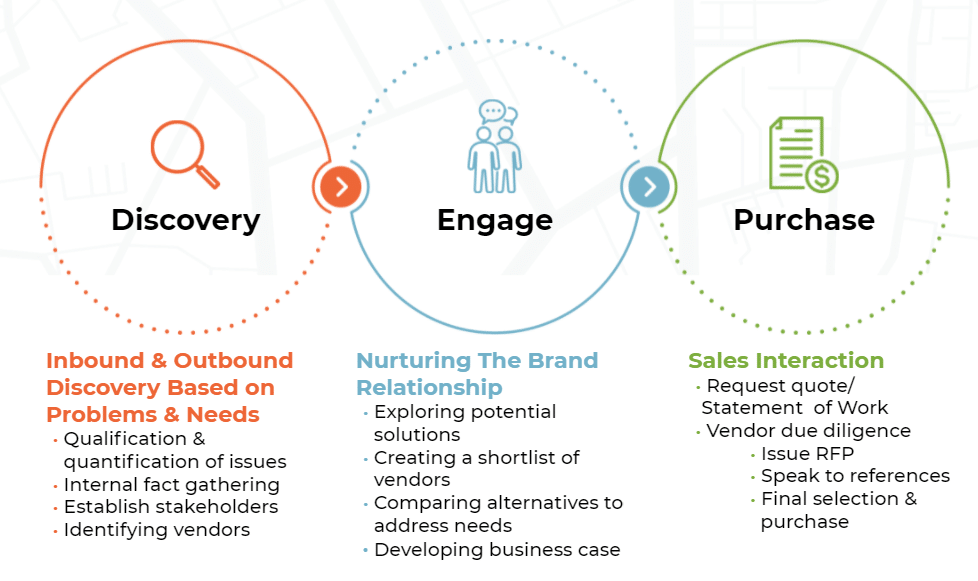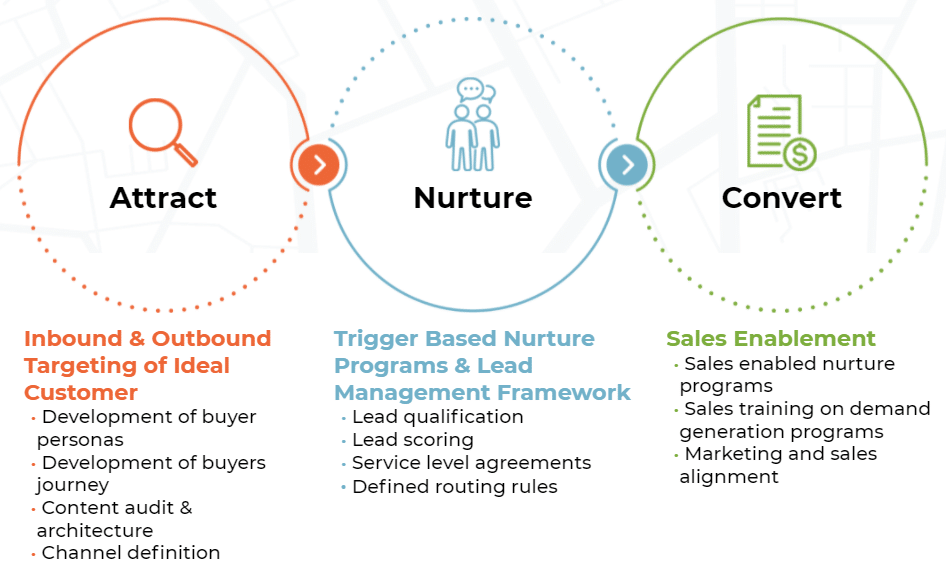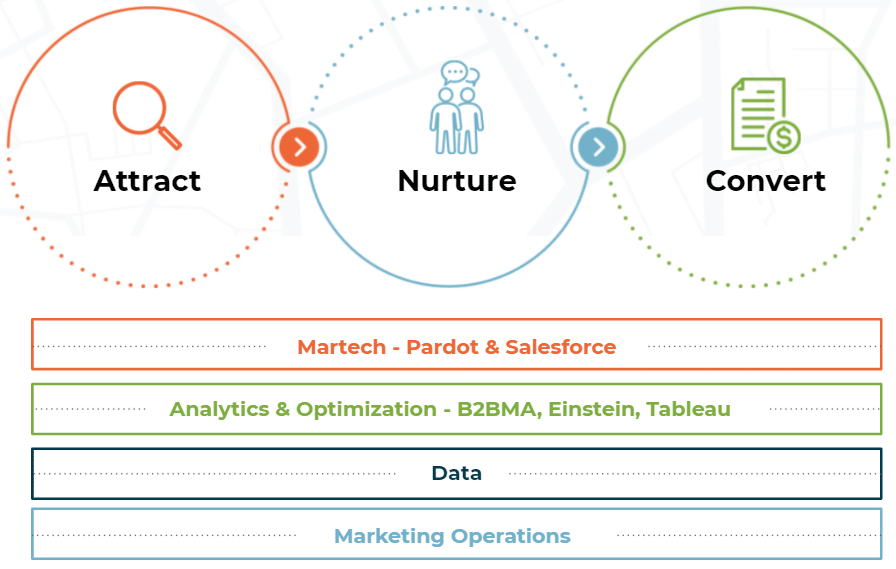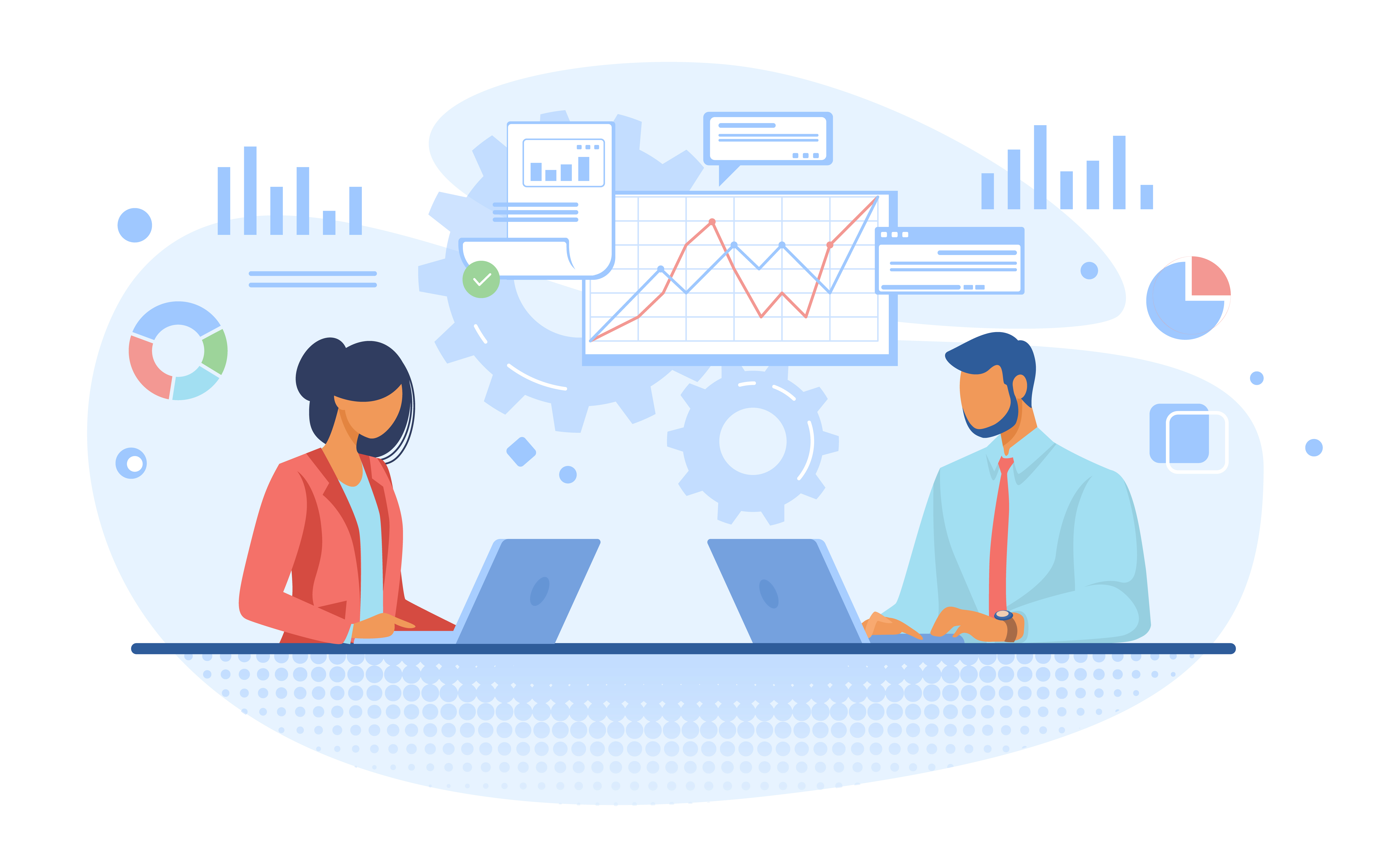You own Pardot. Is it doing everything you want it to?
If you said “no”, you’re not alone. Fifty-four percent of B2B marketers say they’re not getting the full benefits of their marketing automation investment.
The benefits of your marketing automation platform depend heavily on your strategy and ability to execute it. You need a buyer-centric demand generation strategy that creates an ongoing dialogue with your buyers throughout their buying process. We’ve created a model for this.
Our core business is helping B2B marketers get more value from their Salesforce and Pardot investments. When clients come to us, they are often not getting their desired results from Pardot, but are unsure of how to better leverage it to accomplish their goals. Meanwhile, their target customers are getting more sophisticated and complex in the way they purchase, requiring our clients to consistently analyze and adjust their strategies.
To help our clients manage new complexities and adjust to the constant change in the B2B buyer landscape, we developed the Invado Demand Generation Model.
Our model looks at three different, but aligned perspectives. It enables companies to build a demand generation engine that aligns with their buyers at every stage of their purchase journey and drives revenue for their organizations.
Defining Demand Generation
Before presenting the three layers of our model, I’d like to share Invado’s definition of demand generation:
A strategy developed by marketing and sales that aligns to buyers at every stage of their selection journey using content and channels that are preferred by buyers.
A few things to note about our definition:
- Demand generation is a marketing AND sales initiative. It’s critical the two groups are aligned.
- The buyer is driving your decisions. It is not what you as a brand want to say, but what the buyer needs to hear and across what channels.
- The buying journey is not the funnel or waterfall. “I am at the ‘Sales Accepted’ stage of my buying journey,” said no buyer ever!
Layer 1: The Buyer’s View
As you develop your demand generation strategy, it’s important to understand and define your buyers’ purchase paths and how they interact with brands of interest.

The first layer of the Demand Generation model, detailed in the graphic above, takes the outside-in perspective to your buyer’s purchase process. At a macro level, it categorizes the phases of the buyer journey and the actions buyers take in each stage.
It requires you to analyze how buyers build their relationships with your brand and sales representatives. Marketers often want to put a strategy around building relationships with buyers without first observing how they would prefer to build relationships with their brands.
Layer 2: The Marketer’s View
Starting with the buyer’s view enables marketers to properly define how they will develop relationships with them. This is far more sophisticated (and effective) than sending out emails every two weeks or trying to push a buyer who isn’t ready into a demo.

As you can see in the image above, your demand generation program depends on understanding your buyers, giving them what they need at each phase of their journey, and enabling sales to build trust and strong relationships.
Automating this program requires insights, processes, and marketing and sales alignment in all three areas. While not an overnight endeavor, setting this demand generation program up properly will pay off in revenue many times over.
Layer 3: The Operational View
Perhaps the least sexy, but most necessary layer of demand generation is the operational aspect. You can have detailed customer insights, highly targeted content, and even a robust channel plan. But if you can’t automate it, it won’t work, and it won’t scale.

As you can see from the Operational View, sophisticated demand generation is not feasible without leveraging the power of your Pardot and Salesforce solutions. The four foundational elements shown above are necessary and must be continually fine-tuned to keep the engine running smoothly.
Now that you have a model, you can develop an “always-on” engine that aligns with your buyers and drives revenue growth for your company.
If you want to learn more about the model details you can join us on our webinar or schedule an appointment with me to discuss your current demand generation challenges


